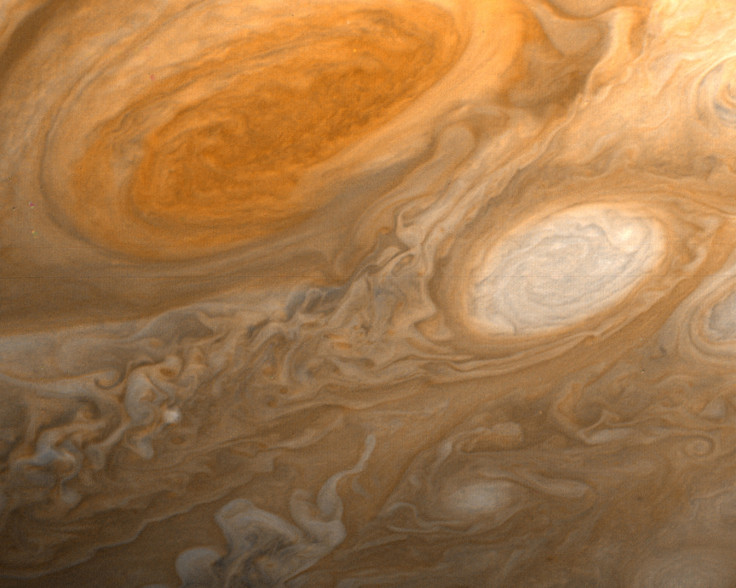Nasa Says Jupiter's Mysterious Great Red Spot Caused by Sunlight

A new Nasa study has solved the great mystery of Jupiter's Great Red Spot and concluded that the colour is actually caused by simple trapped chemicals being broken apart by sunlight in the planet's upper atmosphere.
Jupiter has one of the largest planetary atmospheres in the solar system, with three atmosphere layers made up of ammonia, ammonium hydrosulfide and water clouds at different altitudes.
The Great Red Spot is a tall vortex that is the size of three Earths in Jupiter's atmosphere. It moves across the planet in an atmosphere layer, always remaining at a fixed distance from Jupiter's equator.
Researchers have been theorising for hundreds of years about what causes the Great Red Spot's reddish colour, and until now, it was thought that the colour is caused by some kind of red phosphorus or sulphur compound rising up from beneath Jupiter's clouds.
Scientists at Nasa's Jet Propulsion Laboratory (JPL) have been studying data gained from Nasa's Cassini Solstice mission, which has been exploring Saturn and its moons since 2004 and flew by Jupiter in December 2000.
They also conducted laboratory experiments where they sought to emulate Jupiter's atmosphere by blasting ammonia and acetylene gases (chemicals known to exist on Jupiter) with ultraviolet light, in order to simulate how the sun affects these chemicals.
The experiment produced a reddish material with light-scattering properties that matched a model of the Great Red Spot where the red-coloured material had been confined to the uppermost reaches of the vortex.
"Our models suggest most of the Great Red Spot is actually pretty bland in colour, beneath the upper cloud layer of reddish material," said Kevin Baines, a Cassini team scientist from JPL. "Under the reddish 'sunburn' the clouds are probably whitish or greyish."
Baines says that the previous theory about the red compound rising up from Jupiter's surface is inplausible as if the red material was being transported from below the atmosphere layer, it ought to be present at other altitudes and should make the Great Red Spot look even redder.
The scientists believe that altitudes play a part in creating the Great Red Spot, which is a very tall vortex, much higher in altitude than other clouds.
Also, the vortex's nature is to confine particles and prevent them from escaping, so the redness of the spot could be due to that.
On other parts of Jupiter, the clouds are high and much thinner, so it is possible to view depths in the atmosphere where more brightly-coloured areas in shades of orange, brown and red are visible.
© Copyright IBTimes 2025. All rights reserved.






















